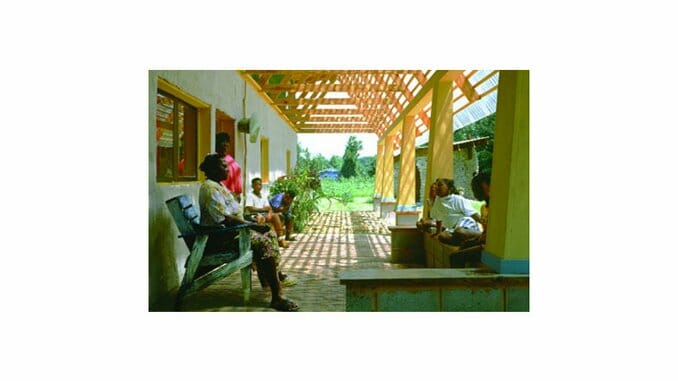
Racists were made here. Bull Connor, who unleashed police dogs on civil-rights protesters marching in downtown Birmingham; Thomas Blanton Jr. and Bobby Frank Cherry, who dropped a stick of dynamite into a black church one Sunday morning; and Governor George Wallace, who preached “segregation now, segregation forever,” showed Alabama’s ugly side, which Martin Luther King Jr., Rosa Parks and the Selma Marchers sought to overcome.
But in rural Hale County, Ala., conflict and conscience intersect. Here, in the late 1930s, author James Agee and photographer Walker Evans embarked on their legendary social experiment—living with sharecroppers and documenting their plight for a magazine article, which eventually expanded into the incendiary tome Let Us Now Praise Famous Men. Here, in the ’60s and ’70s, artist William Christenberry traveled the roads of his grandfather’s farm, turning tenant houses into abstract paintings, photographing children’s graves and measuring local structures for carefully wrought dioramas. And here, in 1993, architect Samuel Mockbee established Rural Studio, a community-driven design/build project under the aegis of Auburn University. The second-year and graduate students involved with the studio use the concept of “context-based learning,” leaving the campus to live in Hale County and work with housing clients who subsist below the poverty line but own their own land. The program’s goal is two-fold—through professional builder/client relationships, students develop a strong social conscience, and they gain experience in designing and building new residences, or renovating existing homes with recycled and donated materials. More rudimentary than Extreme Home Makeover, and more audacious (if smaller scale) than Habitat For Humanity, the Rural Studio classroom functions as an incubator for budding architects and indigent homeowners alike.
Drive through Hale County today, and Agee and Evans’ world will come to life. Broken-down pickup trucks and dusty storefronts are evidence of residents’ hardscrabble lives, eking out a living on catfish ponds and in cotton ?elds, in endless battles against the kudzu. Look out the car window at a freshly plowed acreage, and you’ll see Christenberry’s Rothko-like bands of brown, green and yellow glistening in the afternoon sun.
In every nook and cranny of the county, outlandish, eccentric structures—proof of the Rural Studio’s work—have seemingly taken root overnight. The Yancey Chapel, fortified with matching banks of recycled tires, sits on an old dairy farm in Sawyerville, while a sculptural backstop graces the infield at the rejuvenated Baseball Club in Newbern. Down the road, Auburn students dwell in pods constructed from compressed cardboard and sheltered by a “Supershed” that serves as a communal hallway.
Eight completed residences dot tiny communities like Moundville and Mason’s Bend—creative structures built out of discarded items like carpet squares, hay bales and car windshields. The houses are fascinating examples of form and function—many layouts mimic traditional Southern architectural elements like the dog trot and the shotgun house, while pitched roofs work double duty by facilitating airflow and funneling rainwater to cisterns on the ground. Students build these houses with an eye on the past and an anticipation of future needs, planning extra-wide doorways for wheelchair-bound homeowners like the late Ora Lee Harris, who lived in the “Butter?y House,” and constructing multiple bedrooms with plenty of storage space for Evelyn Lewis and her four children, who are residing under one roof for the first time in years.
Although Samuel Mockbee died of leukemia in 2001, his vision still lives. Dozens of Auburn architectural students pack their bags for a semester or two at the Rural Studio, fulfilling his dream for workable solutions within the Hale County community. Others come from around the world to participate in the project’s Outreach Studio, building vegetable stands, sowing produce gardens, rehabbing old schools and erecting screened-porch additions to mobile homes.
White and black, city-bred and farm-raised—everyone joins together to celebrate the completion of a Rural Studio project. When Jimmie Lee Matthews, aka the Music Man, moved into his home, built by second-year students in 2003, he invited the entire community to his Fourth of July party. His wood-and-metal house—mostly constructed from donated and discarded materials like highway signs, corrugated tin and recycled timber—resonated like a giant woofer as he blasted R&B tunes, rap songs and slow blues numbers all night, proudly showing off his new shower, rolling kitchen cabinets and glass-and-cement tile floor to anyone who wanted to take a look. Students and Hale County citizens wandered up and down the long driveway, matching Matthews’ smile as they pounded beers and patted each other on the back, aware of a job well done.
Across the state, other community projects have begun to bloom: Fashion designer Natalie Chanin recently returned to her hometown of Florence to start Project Alabama, which employs local women to hand-sew clothes sold on the New York market as “homespun couture.” In tiny Gee’s Bend, a handful of women create astonishingly vibrant quilts, which have been displayed at the Whitney Museum of American Art and reproduced in books, on calendars and as postcards, before being painstakingly recreated for sale in the Anthropologie catalog. And in Northport, the Kentuck Arts Council stages an annual three-day folk-art festival showcasing regional artisans like Seale sculptor Butch Anthony, Pittsview artist John Henry Toney and Fayette mud-painter Jimmie Lee Sudduth.
Builders, sculptors, seamstresses and painters: These laborers are breathing life back into Alabama, creating a new economy out of old traditions and undoing the legacy of Bull Connor and George Wallace with each new project. Like Let Us Now Praise Famous Men before them, Project Alabama, the Gee’s Bend Quilters Collective and, especially, the Rural Studio, are exercises that seek to weigh the soul of humankind against the actions of everyday life.
To read about student Cynthia Connolly’s Rural Studio Project, click here.